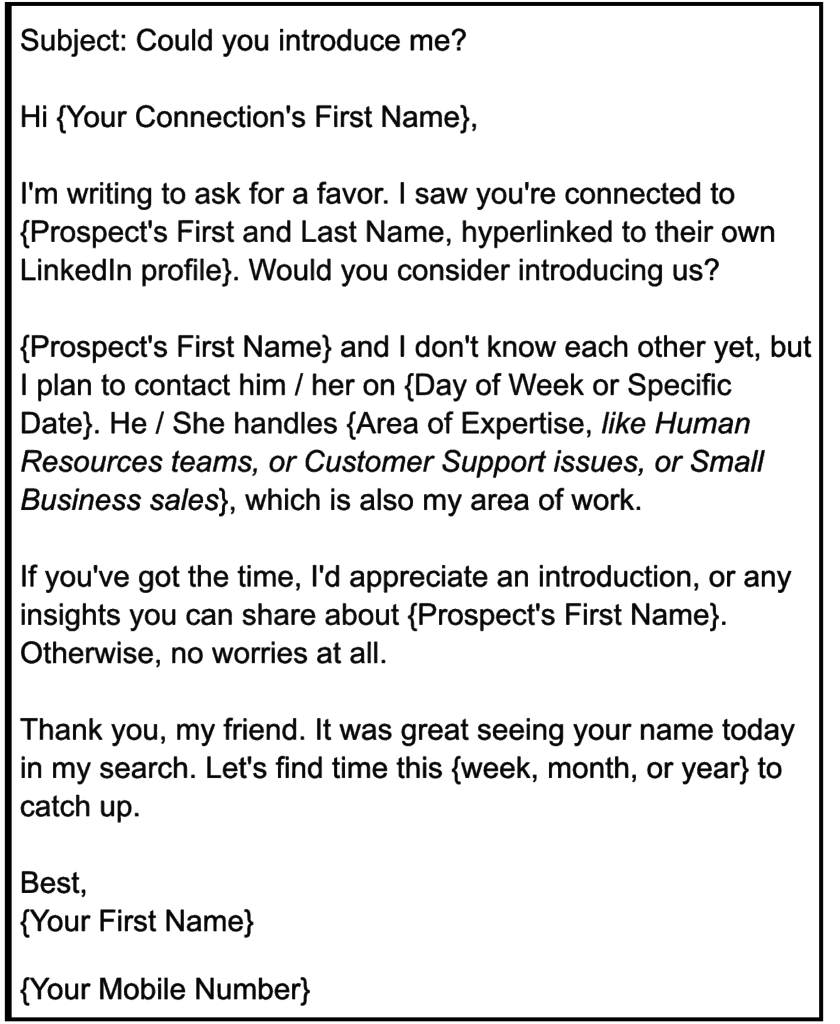If you’re a sales development rep (SDR) aspiring to hit and exceed quota, you won’t reach it by just standing there. You need to do something about it, literally.
“So much time and so little to do. Strike that, reverse it.” – Willy Wonka
I’ve hired and led hundreds of sales development reps. The SDRs who’ve repeatedly beaten quota and earned promotions have learned the importance of taking massive action.
This article is written for B2B sales development reps that want to become (and remain) A Players.
The five barriers that block reps from hitting sales quota are:
- Obscurity
- Lack of Focus
- Inactivity
- No Conversation Flow
- Failure to Continue Learning
Each barrier is self-imposed. Apply lessons from my articles on obscurity and lack of focus, complement them with what you’ll learn here, and gain momentum.
Maintain that momentum and you will breakthrough each barrier and exceed quota. Remember, momentum = mass x velocity, so perform lots of disciplined, daily activity, and do it fast.
Let’s take an extensive look at how the best SDRs overcome the inactivity barrier and establish a rhythm.

Inactivity is the third of five barriers blocking salespeople from hitting quota.
They Get Into State
The best SDRs do not confuse activity with results. Their eye is always on the goal, but never off the activity piece.

SDRs do a lot of the same stuff every day: inbound lead qualification, outbound prospecting and lead generation, multiple attempts to engage companies and decision makers, documenting activities in a CRM or otherwise. Many consider SDR work a monotonous grind.
Sales development is not for the apathetic, that’s for sure. It requires sustained levels of energy and an appetite for outcomes, which comes from the right state of mind.
Tony Robbins often talks about entering your peak state to set things in motion.
Getting into state is like Clark Kent transforming into Superman or Diana Prince into Wonder Woman. Once they decide to become the superhero, nothing gets in the way of accomplishing their goals.
When I was a kid, I loved playing soccer, and was pretty good at it. Before games, I honored the ritual of putting on my team uniform and transforming…
- I carefully positioned each shin guard and fastened the velcro straps just right;
- I slowly pulled my socks over the shin guards to the base of my knee, and neatly folded-down the top of each sock over the shin guards;
- the knot tied on my shorts was a perfect figure eight;
- the jersey was tucked in tight;
- and the laces on my cleats were double-knotted, so nothing slipped
While getting dressed, I’d visualize passing the ball like an archer, weaving past defenders like a cool breeze, and scoring like I was Pelé.
I’d win before the game even started.

I LOVED playing AYSO soccer. Pacifica, California, 1982.
Later, when I played rugby in college, I learned about the New Zealand All Blacks and their famous haka.
Prior to every game since 1905, the All Blacks gather midfield to face their opponents and perform the pre-combat Maori dance. This, my friends, is how you get into state.
New Zealand All Blacks haka, performed before the final match of the 2011 Rugby World Cup.
Do you think they won?
I’m not suggesting SDRs perform a haka before their day starts, but find ways to incite a peak state. Listen to a walk-up song before you enter the office, dress to the nines, or hear Tony Robbins. Whatever ritual you choose, move and the way will open.
They Maintain a Sense of Urgency
Average SDRs say they’ll do something, but actually do something else altogether.
Overheard in the office at 8:47am: “I’m going to hammer the phones today!”
Seen posted on Facebook at 10:21am: “LOVE that photo of you two! #Adorbs!”
Meanwhile, the best SDRs execute. Time is money and the fast pace serves a twofold purpose:
- The value of leads depreciates by the minute, like driving brand new cars off the lot
- The average tenure of an SDR is about 1 to 2 years, which isn’t much time to get great
The Value of Leads Depreciates by the Minute
Studies continue to prove, the longer SDRs take to respond, the faster a lead loses it’s value.
Take a look…
- Contact leads within 60 minutes of their arrival and you’re 60x more likely to qualify them
- Call a lead within 5 minutes and they’re 100x more likely to pick up the phone
- Odds of getting a hold of someone decrease up to 10x in the first 60 minutes
See leads as people, not leads. In most cases, sales development reps are a prospect’s first impression of the company, the offering, and the customer experience.
See leads as customers, not prospects. Whether they invest now or later doesn’t matter. Follow-up fast and treat people who’ve inquired about your offering with a first class experience.

The Achievers sales development team, early 2015.
The Average Tenure of SDRs is About 1 to 2 Years
The typical SDR role only lasts about one to two years (TOPO’s research proves it here, The Bridge Group’s research proves it here, and I prove it here).
Use the time to build and maintain a strong network, adhere to a proven process, and measure your progress, or life as an account executive will really suck.

There is no trying, my friend. Just do.
When you look back on the timeline of your career, one to two years is a blip. In his book The Power of Urgency, author William Keiper talks about proactive-urgency:
“When harnessed with commitment and clarity of intention, (proactive-urgency) is a force with which you can create almost immediate transformation in the service of your most important goals.”
Sales development reps who create proactive-urgency know there’s a lot to learn in little time. Though many SDRs think they’re ready for the next role, there’s a slew of competencies they’ve yet to develop. And the next role isn’t always available.
Learn and demonstrate the skills below. Not only will you increase the probability of a promotion, but you will become indispensable.
- Consistently achieve / overachieve your meetings and opportunities quota
- Get certified on presenting the company’s offering(s) – live, online, and by phone
- Forecast your monthly and quarterly performance with accuracy
- Craft a territory plan, showing an approach for targeted accounts and prospects
- Show results you’ve achieved from applying sales methodologies
- Facilitate a successful discovery call with a key prospect
- Prepare and deliver at least two QBRs (highlighting a plan for your current role)
- Articulate your company’s contract (Ts & Cs, SLAs, licensing, end-user requirements)
- Present at least 2 use cases / success stories / customer cases to an eStaff member
Hit this level and your next team will make space for you. Reach the point where the company needs you more than you need the company. Remember, momentum = mass x velocity, so hustle.
They Cultivate Their Network
We are all connected. Reed’s Law tells us the benefit of social networks can scale exponentially in size. Condition yourself to first look for connections and learn to make your network work for you.
Here’s an exercise: Reach out to your mutual connections and ask them to broker an introduction to your targeted prospects.
#1) Create a list of your high-value targets (use the table below as a guide)

Print and complete this form. Pin it to your monitor or bathroom mirror. If not, then out of sight, out of mind.
#2) Find out how you’re connected to the targets (use LinkedIn or InsideView, for example)

Shared LinkedIn connections are the people who can introduce you to your high-value targets.
#3) Once you identify the shared connections, inform them of your request via email:
 Email your shared connections and ask for an introduction and referral.
Email your shared connections and ask for an introduction and referral.
Make time to buy them a beverage or lunch.
Once the email is sent, here are possible scenarios and how to handle them:

What’s critical is that you follow-up and follow through.
Make a habit out of asking for introductions. Challenge yourself to ask for 15 introductions per month. Refresh your Top 10 High-Value Targets List along the way.
The best SDRs are resourceful. They’ve awakened from the delusion of separateness and bring their network to life. As so many experts have said, your network is your net worth.
They Own Their Calendar
The best SDRs think an 8am to 5pm schedule is laughable. Mondays are just as awesome as Fridays. The SDRs who are accessible 24/7/365 catch the worm.

Prospects don’t care what day it is – they need answers. Include your mobile number in your email signature, reply to people right away, and schedule time to prospect. If you must subscribe to the Monday through Friday workweek, take a bookends approach or model the first two calendars below.
The Bookends Approach
Reserve Mondays and Fridays for research, sorting through and responding to critical emails, social outreach, team meetings and 1:1’s.
Tuesdays, Wednesdays, and Thursdays are preserved for sacred prospecting and phone time. Wear blinders and hit it hard in the middle of the week. The most important prospects hear from you on these days, and there’s an intense level of phone and email activity (also known as double touches).
The image below is an example of the bookends approach. TTP stands for To the Point, and is a daily, all company 10-minute meeting held by Achievers. The time is used to update the entire company on progress vs. plan. It’s a prime example of collective effort.
3×3 research comes from VorsightBP. It refers to studying top prospective accounts and contacts, to uncover three pieces of relevant information to mention in a three-minute conversation with the prospect.

If you insist on only working Monday through Friday, take the bookends approach.
An Effective 9 to 5 SDR Calendar
You might look at the 9-9:30am block and think, “Yeah, I get it. Do the follow-up and immediate outreach first.” Yes, that’s correct. Challenge yourself, for the next ten days, to do just that: use the first 90 minutes of your workday to tie-up loose ends from yesterday.
And set your timer. Ignore distractions during that block of time. No texts, social media, talking with coworkers, eating cereal, working out, grabbing coffee or a cigarette are allowed.
Then, from 10-12pm, and again from 1-2:30pm, get on the double touch bus. It means to make a phone call and send an email afterwards.
Finally, attend any internal meetings (1:1’s, team meetings, Power Hours) late in the day before prepping for tomorrow.

SDRs manage time by prepping for the next day, every day. (TOPO)
When Email Becomes Your To-Do List
I’m sharing the calendar of Zappos CEO, Tony Hsieh for two reasons:
- Tony has mastered owning his calendar, which is worth modeling;
- Senior executives get a lot of emails each day; enough to often warrant 8 hours to process them (shown in the image below).
Decision makers and influencers deserve emails that are brief, concise, actionable, timely, and relevant. And, as we talked about earlier, warm introductions make emails stand out.

Business leader, Tony Hsieh, saves inbound emails in his Yesterbox.
Harness your work weeks so they work for you. Author Cal Newport calls it fixed-schedule productivity.
“Fix your schedule, then work backwards to make everything fit – ruthlessly culling obligations, turning people down…and shedding marginally useful tasks along the way.”
Take ownership of your days, hours, and minutes.
They Ask Better Questions
Levi Strauss once said, “The wise man doesn’t give the right answers, he poses the right questions.” The best SDRs ask thought provoking, open-ended questions – of themselves and about their business.
Questions of Themselves
The best SDRs keep the big picture in sight. They regularly assess their place in the business world and reconcile their contributions.
Several times a year, SDRs must ask:
- Why am I in sales development?
- Why do I work for the company that employs me?
- Why do I need to speak with particular prospects?
- Why do I need to make quota?
- Why do I read articles about sales development?
- How do I contribute to my team, our business, and our prospects?”
Have two solutions for every problem you face. Sometimes you won’t have enough leads to call. Territories may not have enough accounts. Your teammates might have lower standards than you.
Before escalating the problem to others, like your boss, think things through. Most of the time, you’ll find you’ve got the answers within you.
The 5 Whys technique, developed by the founder of Toyota, was designed to uncover the root cause of problems. Start with a problem, like “I missed quota,” and then ask why, five times, based on each question’s answer.
The technique will drill-down to the root cause of the problem, which is often a broken, or missing, process.

After asking “why” five times, you’ll arrive at the root cause of your problem.
The root cause is often a broken, or missing, process.
Try the 5 Whys approach when confronted with a problem. Most of the time, the answers to your issues are within you.
Questions About Their Business
SDRs must own their business within the business. For example, if they support three account executives in an assigned territory, the SDR must know:
- How many inbound leads can we expect each day? From what sources?
- What upcoming events are scheduled? How will prospects hear about the events?
- How does the account mix break out (the percentage of customers vs. prospects)?
- How well do the customers and prospects in the territory know me?
- What percentage of overall revenue is expected from this particular territory?
- How often will I meet with my account executives? Do we have weekly 1:1’s?
- When we do meet 1:1, what will we discuss?
Ask better questions, get better results. And keep score. Your business tracks how it’s doing against key objectives by watching key performance indicators (KPIs). You should too.
- How many booked meetings do I need this month?
- How many meetings did I book last month? What is my month-over-month average?
- How many completed meetings do I need?
- What’s my conversion rate of booked meetings to completed meetings?
- How many pipeline opportunities must my meetings yield?
SDRs must also ask how many marketing qualified leads (MQLs) and sales qualified leads (SQLs) are required to fuel the business’s revenue pipeline.
Venture capitalist, Tomasz Tunguz created the worksheet below for SaaS startups to monitor progress against their growth targets. It’s an excellent blueprint for calculating MQL-to-SQL-to Customer conversion rates.

Redpoint VC, Tomasz Tunguz created this worksheet for calculating the numbers required to exceed plan.
The best SDRs also ask prospects killer questions. That’s an area we’ll dive into when we discuss conversation flow.
The right questions help connect the dots. Sincere answers about why you’re really a sales development rep will inspire you to make something happen.
When you’re keen to really know your business’s metrics, you’ll take necessary steps – and encourage your teammates to, as well – to move things forward.
They Know the Real Meaning of Momentum
The five barriers that block salespeople are no joke. If you do nothing to break through them, they’ll stay present throughout your career.
Build momentum by taking massive action. Author Seth Godin tells us momentum requires “a different kind of showing up, of being part of something bigger” and “committing to a process.”
Get into state. Maintain a sense urgency. Cultivate your network. Own your calendar. Ask better questions. Know the real meaning of momentum. These are cornerstones for moving the needle, making a difference, and hitting quota.







